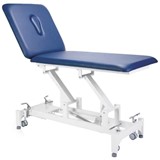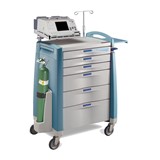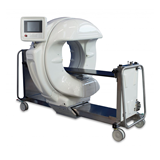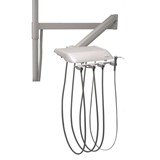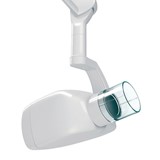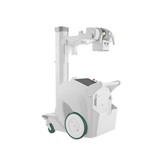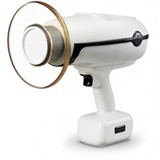Struggling with medical equipment failures in your clinic? Learn how leading healthcare providers in Australia keep their devices running smoothly and how you can too.
Key takeaways
- Understand costs: Equipment downtime leads to lost revenue, regulatory risk, and reduced patient trust, costs that quickly escalate.
- Priority equipment: Focus downtime prevention efforts on life-saving, sterilisation, and high-use diagnostic devices, these carry the greatest risk to patient safety, compliance, and clinic revenue when offline.
- Preventative maintenance: Implementing scheduled and predictive maintenance greatly reduces emergency repairs and improves reliability.
- Trained staff: Equipping your team to spot early warning signs helps prevent equipment failures before they escalate.
- Service-level support: Clinics that use reliable suppliers with fast SLAs recover quicker and reduce patient disruption.
- Digital tracking: Leveraging asset management software and diagnostics provides visibility and faster resolution.
- Stay compliant: Align with TGA, RACGP, and NSQHS requirements to ensure legal and safety obligations are met.
- Smart replacement: Knowing when to repair versus replace is crucial for minimising long-term disruptions.
- Supply chains: Disruptions to global and local supply chains can delay critical repairs, choose suppliers with local stock and plan ahead with spares for high-risk items.
- Risk stratification: Not all equipment is equally important, categorise your devices by clinical impact to focus resources where downtime hurts most.
- Local case success: Clinics in Brisbane, Sydney, and Melbourne are already cutting downtime by up to 45% using these practices.
Introduction: Why minimising downtime is a strategic priority
If you're managing a medical facility in Australia, there's a good chance you've faced the frustrating consequences of equipment downtime: cancelled appointments, patient complaints, or worse, non-compliance with industry standards. But what’s often underestimated is just how damaging even minor delays can be.
In 2023, the Australian healthcare sector saw increased pressure on efficiency, with private clinics expected to deliver higher service standards amidst tightening budgets. According to the Australian Bureau of Statistics, over 46% of patients reported difficulty getting timely appointments. Equipment downtime only worsens this issue.
The good news? Top-performing Australian clinics are proving that with the right systems, maintenance routines, and supplier relationships, you can significantly reduce downtime, and improve patient outcomes.
Understanding the true cost of downtime
Every minute your equipment is offline creates ripple effects throughout your operations:
- Financial loss: A single imaging machine like an MRI or CT scanner can generate $2,000–$5,000/day. A week-long outage? Easily $25,000+ in lost revenue.
- Patient impact: Delays frustrate patients and erode trust. The AIHW (2023) notes 46% of Australians are dissatisfied with appointment wait times.
- Staff efficiency: Workarounds or manual processes increase burnout and reduce productivity.
- Compliance risks: Downtime may result in usage of non-calibrated or unverified devices, triggering breaches in TGA and RACGP standards.
Top medical devices to prioritise for uptime and reliability
Not all equipment carries the same weight when it fails. Some devices are inconvenient to lose, while others could risk patient safety, legal compliance, or cause a serious bottleneck in your workflow. Knowing which machines to prioritise for downtime prevention isn’t just smart, it’s essential.
Here are the medical devices that benefit most from proactive maintenance and continuity planning:
Life-saving and high-dependency equipment
This category includes equipment where failure can have direct consequences on patient safety, regulatory standing, or clinical reputation.
Examples:
- Defibrillators – Must be ready at all times for emergencies. Even a single failure can have legal and ethical consequences.
- Anaesthesia machines – Critical for surgical and day-procedure clinics. Downtime halts procedures instantly.
- ECG machines – Frequently used in cardiac monitoring and diagnostic workups. Failure can delay diagnosis in acute situations.
Infection control and sterilisation systems
Autoclaves and washer disinfectors are often overlooked, until they stop working.
Examples:
- Bench-top autoclaves – Essential for sterilising reusable surgical tools and dental instruments.
- Ultrasonic cleaners and disinfectors – A breakdown here can slow down entire treatment cycles.
Diagnostic and imaging equipment
These devices support high-volume, core service areas, often generating substantial revenue and forming the backbone of care delivery.
Examples:
- Ultrasound machines – Vital for GP clinics, physiotherapists, fertility, and obstetric practices.
- Digital X-ray units – Common in multidisciplinary and rural health services.
- Spirometry and audiometry devices – Key to respiratory and hearing diagnostics in general practice.
Practice management essentials
While not life-saving, some devices underpin operational continuity and patient flow.
Examples:
- Patient monitors – Used in post-procedure recovery or during minor surgery.
- Vital signs monitors (e.g. BP, oxygen saturation) – Often shared across rooms and used for every consultation.
- Examination lighting – Malfunctions can affect procedural quality or safety.
Proactive maintenance strategies that reduce breakdowns
The most efficient clinics in Australia take a preventative approach to maintenance. Here’s what works:
1. Scheduled maintenance
Set regular servicing intervals aligned with manufacturer guidelines. For example:
- Autoclaves: every 3–6 months
- ECG machines: annual calibration
- Imaging systems: quarterly testing
Use maintenance logs or digital reminders to stay compliant and consistent.
2. Predictive maintenance
Smart devices can now self-diagnose. For instance:
- Some sterilisation systems track cycle performance and detect inefficiencies.
- Portable ultrasound devices send alerts when probe performance degrades.
This helps identify faults early, before total failure.
3. Condition monitoring
Tools like thermal cameras and vibration sensors detect hidden electrical issues or wear in pumps and motors.
Case example:
A Geelong-based private surgical centre uses predictive analytics from its imaging system supplier to identify part replacements 3–4 weeks before failure. Their unplanned downtime dropped by 38% within 12 months.
Training and empowering your clinical team
Your frontline staff play a key role in minimising downtime, if they’re trained to recognise and report issues early.
Training essentials:
- Daily checks: Create a checklist for staff to inspect machines at the start of each day.
- Fault reporting: Train staff to log minor issues via an internal ticketing or alert system.
- User handling: Reinforce proper startup/shutdown and cleaning procedures.
Results from clinics:
A private cardiology clinic in Adelaide incorporated a 15-minute equipment induction session during onboarding and reduced damage-related downtime by 21% in six months.
Choosing the right suppliers and SLAs
A common downtime trap? Relying on suppliers with slow response times or vague warranties.
What to look for:
- Service-level agreements (SLAs): Define maximum response and resolution times.
- Onshore technicians: Ensure rapid response, especially for imaging or anaesthesia systems.
- Loan equipment options: Some suppliers offer temporary replacements for high-dependency gear.
Australian example:
Melbourne’s Parkside Diagnostics negotiated a 4-hour SLA with their equipment provider. With local techs on call, they resolved issues 62% faster than the national average.
Digital solutions to reduce downtime
Technology gives you better visibility and faster response.
1. Asset tracking software
Track equipment location, service dates, and maintenance history. Good options include:
- SmartTrace Medical (Australian-made)
- Tofino Asset Manager
2. Automated diagnostics
Many new models of infusion pumps, ECG machines and imaging units offer:
- Real-time error alerts
- Remote access for diagnostics
- Usage pattern analytics
3. Maintenance apps
Let staff report faults instantly, attach images, and track progress from mobile devices.
Example: A Sydney multi-practice clinic implemented a mobile reporting tool integrated with its asset system. Fault reporting speed increased by 400%.
Regulatory compliance and accreditation
Downtime doesn’t just delay patients, it could jeopardise your accreditation.
Australian standards to know:
- TGA: Devices must be properly maintained, calibrated, and compliant.
- RACGP Standards (5th Edition): Requires documented servicing and function checks.
- NSQHS (Standard 1 & 5): Mandates equipment safety and maintenance for accreditation.
Risk example: A Victorian practice failed to calibrate its spirometry equipment within TGA timelines. During a random audit, they faced immediate corrective actions and temporary service suspension.
Managing supply chain vulnerabilities and parts availability
Delays in receiving equipment parts aren’t just inconvenient, they can bring your clinic to a standstill. In recent years, Australian medical facilities have increasingly felt the pinch of supply chain disruptions, especially when dealing with imported or specialised equipment.
Recent supply challenges in Australia
- COVID-19 backlogs led to global shortages of imaging, sterilisation, and anaesthetic equipment, with some parts delayed by months.
- Freight bottlenecks in 2022–23 affected deliveries of European and US-manufactured components, leaving many clinics waiting weeks for minor replacements.
- Geopolitical tensions and manufacturing bottlenecks have impacted the availability of semiconductors and critical electronic parts, especially for diagnostic equipment.
Risk stratification: Prioritising equipment by criticality
Not all equipment downtime is created equal. While a broken exam lamp is annoying, a faulty defibrillator or steriliser can halt your operations or endanger patients. That’s why clinics should triage equipment by criticality to better allocate maintenance and risk planning resources.
Equipment criticality tiers
To effectively manage downtime risks, it helps to classify your clinic’s equipment based on how essential each item is to day-to-day operations and patient safety. This process, known as risk stratification, helps prioritise where your maintenance efforts and budget should go.
- Critical equipment includes items like defibrillators, anaesthesia machines, and ECG units. If these fail, there is an immediate and significant risk to patient safety or a potential breach of legal and compliance obligations. These devices should receive the highest level of preventative maintenance and rapid response planning.
- Essential equipment encompasses devices such as autoclaves, ultrasound machines, and spirometry units. While not life-saving at the moment, these tools are fundamental to diagnostics and daily clinical function. Their downtime can cause significant appointment delays, force cancellations, or reduce the quality of care.
- Non-essential equipment includes items like exam stools, digital scales, and otoscopes. While helpful, these are typically easier to replace or temporarily work around without impacting clinical outcomes. However, a pattern of failures across multiple non-essential items can still disrupt operations.
By understanding which tier each piece of equipment falls into, you can create a smarter, risk-aware maintenance plan and avoid over-investing in low-impact assets.
How to apply this in practice
- Audit your equipment and assign a priority level to each item.
- Build your maintenance schedules and contingency plans based on criticality.
- Allocate preventative maintenance funding primarily to critical and essential equipment.
- For high-risk gear, consider having loan equipment or backup units in place.
Case study: How a Brisbane clinic reduced downtime by 45%
Clinic: UrbanHealth Diagnostics, Brisbane
Problem: High unplanned outages in imaging systems and sterilisation units.
Solutions implemented:
- Shifted from reactive to predictive maintenance
- Partnered with a supplier offering 24/7 technician access
- Digitised asset tracking and introduced staff fault reporting via app
Results:
- Downtime cut by 45% within 9 months
- Patient complaints due to delays fell by 62%
- Average repair time dropped from 14 to 6 hours
Knowing when to repair or replace
Sticking with ageing equipment can cost more than upgrading.
Evaluate using:
- Failure frequency: More than 2–3 failures per year? Start planning a replacement.
- Supportability: If parts or software updates are scarce, reliability will worsen.
- Efficiency: Newer models may offer faster workflows or remote diagnostics.
Funding tip: Use commercial finance or asset leasing for large purchases. The ATO’s instant asset write-off (subject to eligibility) can offset investment costs, check with your accountant.
Final thoughts: A strategic approach to uptime
Minimising downtime is more than maintenance, it’s a business strategy.
Top clinics across Australia are reaping the benefits of:
- Scheduled and predictive maintenance
- Reliable supplier support
- Empowered clinical teams
- Compliance-first operations
- Smart asset management
In doing so, they’re protecting revenue, improving care quality, and staying ahead of regulatory risks.
Now it’s your turn. Start with a downtime audit, review your service agreements, and explore what tech can do to keep your clinic running smoothly, every single day.








